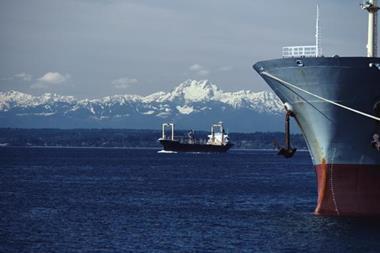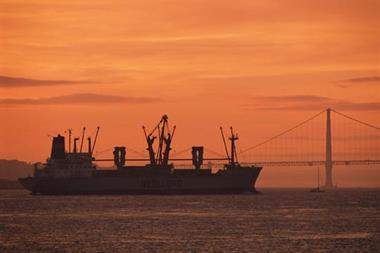Marine rates threaten to plummet to new lows as a result of overcapacity and a lack of major losses. We navigate the stormy seas of today’s market
In an effort to diversify away from property catastrophe, several players have in recent years entered the marine insurance market. This, in turn, has added capacity to an increasingly unprofitable class of business.
While marine rates climbed marginally in the aftermath of Hurricane Katrina in 2005, this was less in response to claims and more a result of the contraction of capital in the industry. Miller Insurance Services marine broker Nigel Miller says: “For classic blue-water tonnage, hurricanes don’t have the impact you might think because of the vessels’ ability to manoeuvre out of the way.”
Much of the new capacity in the market has come from Bermuda operators in the Lloyd’s market. “Bermudian capacity has entered the Lloyd’s market to write catastrophe reinsurance,” Miller says. “Under the business planning regulations Lloyd’s has imposed, operators have to show a balanced portfolio in their book. So there are quite a few organisations now entering the direct marine market. This is causing people to say the sector doesn’t need any more marine capacity.”
Apart from a few exceptions – the most notable being cover exposed to increased piracy risk in the Gulf of Aden – the trend of declining rates continues. Pressures on the shipping industry and marine insurance market have grown since the financial crisis reached its peak in 2008. The drop in world trade is affecting cargo volumes, freight rates and vessel values.
Perfect storm brewing
New tonnage that was ordered four or five years ago has caused an oversupply of vessels. Despite the downturn, 2009 was the busiest year for shipbuilders since 1985. At the start of 2010, around 270 million tonnes of dry-bulk ships were still under construction or on order – around 59% of the current fleet.
The number of cancellations is fewer than might have been expected, writes Miller in its 2010 marine market report. Scrapping and revised order books are expected to assuage fears of oversupply in the tanker market, while further scrapping is expected in the single-hull market.
Nevertheless, an oversupply of vessels remains a concern. Daily charter rates for capesize bulk carriers – very large carriers – was around $100,000 (£64,000) a day in 2008, but just $40,000 a day in 2009, reveals Miller. “There is 48.2 million dead weight tonnage [DWT] of new bulk carriers coming through and only 9.8 million DWT due for scrapping.”
Figures suggest that 10%-15% of the world’s container fleet is laid up, but it is thought the real figure could be much higher. Very large crude carriers are trading better, as demand for energy resources continues to remain high.
“The container market has been absolutely on its knees,” Miller says. “There is still serious overcapacity as world trade slows down. This is coupled with the largest rebuilding programme in history. That said, there are signs at present of a modest recovery.”
The oversupply in vessels, a drop in world trade, softening insurance rates and a lack of pure good underwriting results for insurers means this is a disaster waiting to happen, believes Miller. “When there is a shipping downturn, people start slow-steaming [reducing speed from 25 to 20 knots] and doing deferred repairs. So you classically see an increase in the repair cost at a time when the marine market is as soft as it’s ever been. It’s a perfect storm because you’ve got a delay in the claims frequency, rates that have never been cheaper and capacity that’s bulging.”
The shipping industry boom experienced in the years before the downturn has also inflated the incidence of claims. “When the ships were constantly employed, the owners didn’t want to take them out of service. So you don’t necessarily find out about some of the knocks and scrapes through dry docking that you might have done in the past,” says Ascot Underwriting marine hull underwriter Andrew Moulton.
“This led to some of the deterioration in losses with the downturn. People said: ‘Let’s put the ship into dry dock – do the maintenance and look at them.’ And then they realised there were bumps and scrapes they wanted to sort out. The insurance market was very supportive of the shipping market during [the financial crisis] because, unlike the property market, we didn’t force people to revalue their vessels in line with market conditions, which meant banks didn’t have to foreclose on loans. It would have been quite easy for us to demand the vessels be re-valued on a market basis.”
Minimal Deepwater impact
Many in the shipping industry are looking to China in the hope that its economic growth will bring trading levels back up again. As China’s economy bounces back from the financial crisis, the country is importing vast quantities of raw materials from countries such as Brazil and Australia. After a 35% drop in freight rates in the six weeks before Christmas 2009, there were encouraging signs as the market entered 2010.
Marine reinsurance prices also remain soft with plentiful capacity. While energy rates are expected to harden substantially over the next few months, this will not trickle through to marine accounts, according to Guy Carpenter’s July renewals report.
“Although the Deepwater Horizon loss is potentially a market-changing event, it is geared principally towards energy and liability exposures,” the report says.
“Reinsurers will be hard pressed to justify rate increases for clients writing traditional cargo/hull accounts.”
Unless reinsurance rates firm up, direct marine rates are unlikely to change direction.
“I’d be very surprised if there are any material changes in the current rating levels, which are, at best, inadequate because there’s too much capacity,” Miller says.
“There are examples of where new European insurers are coming in and quoting at rates that are 50% and 60% of those rates charged in the more traditional markets, which are already inadequate – it’s quite frightening.”
In the run-up to renewals, the only factor likely to turn the market is a major loss. But, even big losses are not felt as widely in the market as they may have been in the past, when risks were shared around a greater number of players.
“You’d need a high-capacity loss – a big cruise ship or a very large tanker with an oil spill – to change things,” Moulton says.
He thinks the good performers will continue to subsidise the poorer performers to a certain extent. “Over the past 12 months, those owners that have performed well have seen some sort of amelioration through performance credits. Those owners that have performed badly have had increases in rates, but whether they’ve had sufficient increases in rates is up for debate.” IT






































No comments yet